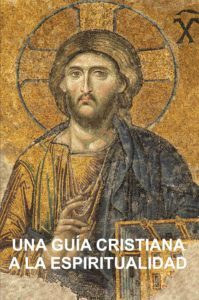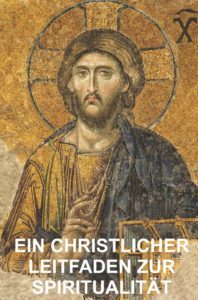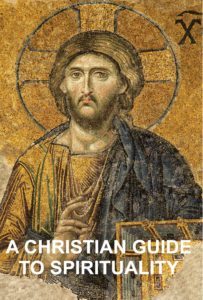Stephen W. Hiemstra's Blog, page 123
April 4, 2021
Prayer Day 20
By Stephen W. Hiemstra
Holy and Compassionate Father.
We praise you for creating us in your image.
We praise you for the gift of eternal life and for the gift of your son, Jesus Christ.
In the power of your Holy Spirit, grant us strength for each day.
Forgive our sin; heal our hearts; reconcile us with you and with each other.
In Jesus’ precious name, Amen.
Prayer Day 20
Also see:
Believer’s Prayer
Other ways to engage online:
Author site: http://www.StephenWHiemstra.net
Purchase Book: http://www.T2Pneuma.com
Newsletter: http://bit.ly/HailMary21
The post Prayer Day 20 appeared first on T2Pneuma.net.
Oración Dia 20
Por Stephen W. Hiemstra
Padre santo y compasivo.
Te alabamos por creanos en tu imagen.
Te alabamos por el regalo de la vida eterna y el regalo de tu hijo, Jesucristo.
En el poder de tu Espíritu Santo, danos la fuerza para cada día.
Perdona nuestros pecados; sana nuestros corazones; reconcilianos contigo y con los demás.
En el precioso nombre de Jesús oramos, Amén.
Oración Dia 20
Ver también:
Prefacio de La Guía Cristiana a la Espiritualidad
Otras formas de participar en línea:
Sitio del autor: http://www.StephenWHiemstra.net
Comprar Libro: http://www.T2Pneuma.com
Boletín informativo: http://bit.ly/HailMary21
The post Oración Dia 20 appeared first on T2Pneuma.net.
Gebetstag 20
Von Stephen W. Hiemstra
Heiliger und mitfühlender Vater.
Wir preisen dich dafür, dass du uns nach deinem Bild geschaffen haben.
Wir preisen dich für das Gabe des ewigen Lebens und für das Gabe deines Sohnes Jesus Christus.
Gewähre uns in der Kraft deines Heiligen Geistes Kraft für jeden Tag.
Vergib unsere Sünde; heile unsere Herzen; versöhne uns mit dir und miteinander.
In Jesu kostbarem Namen, Amen.
Gebetstag 20
Siehe auch:
Einleitung auf Ein Christlicher Leitfaden zur Spiritualität
Andere Möglichkeiten, sich online zu engagieren:
Autoren Seite: http://www.StephenWHiemstra.net
Herausgeber Seite: http://www.T2Pneuma.com
Mitteilungsblatt: http://bit.ly/HailMary21
The post Gebetstag 20 appeared first on T2Pneuma.net.
April 3, 2021
Mark 15: Holy Saturday
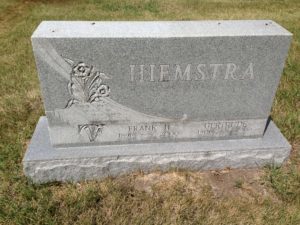 “And Joseph bought a linen shroud, and taking him down, wrapped him in the linen shroud
and laid him in a tomb that had been cut out of the rock.
“And Joseph bought a linen shroud, and taking him down, wrapped him in the linen shroud
and laid him in a tomb that had been cut out of the rock.
And he rolled a stone against the entrance of the tomb.” (Mark 15:46 ESV)
By Stephen W. Hiemstra
Jesus is buried on the Day of Preparation which ends at sundown when the Jewish Sabbath begins. This detail in Mark’s Gospel is important because burial was forbidden on the Sabbath and executed criminals could not hang overnight (Deut 21:23). The Gospels mention nothing taking place on the Sabbath while Jesus lay in the tomb and the narrative resumes on the following day. In other words, Jesus rested in the tomb over the Sabbath. Holy Saturday was a day of mourning and grief.
A Grieving HolidayGrief is more than crying. In Jesus’ Beatitudes, Matthew records: “Honored are those who mourn, for they shall be comforted.” (Matt 5:4) Luke records: “Honored are you who weep now, for you shall laugh.” (Luke 6:21) Both accounts of this Beatitude are written in the form of a lament which has two parts. In the first part, one empties the heart of all grief and pain and anxiety in prayer to God; in the second part, having been emptied the heart turns to God in praise. In the lament, when we grieve, we make room in our hearts for God.
The Theology of LamentThe most famous lament in the Bible is cited by the Gospel of Mark as Jesus’ last words: “My god, my god, why have you forsaken me?” (Mark 15:34) These words come from Psalm 22 verse one which turns to God in verse 19: “But You, O LORD, be not far off; O You my help, hasten to my assistance.” At a time when much of scripture was memorized, rabbis would cite the first part of a passage knowing that the audience would fill in the missing part. Knowing this tradition, Jesus could cite the first verse in Psalm 22 knowing that people hearing him would know the Psalm and how it ended.
Jesus gave us a template for dealing with grief the night before during his prayer in Gethsemane. Mark records that Jesus’ prayed three times: “Abba! Father! All things are possible for You; remove this cup from Me; yet not what I will, but what You will.” (Mark 14:36). Jesus is aware that he stands before the cross and does not want to die; still, he yields to God’s will. Each time we face pain and grief we are faced with a decision: do we turn to God or do we turn into our grief? Our identity is crafted from a lifetime of such decisions.
Joseph of ArimatheaThe story of Joseph of Arimathea is instructive. Mark records: “Joseph of Arimathea, a respected member of the council, who was also himself looking for the kingdom of God, took courage and went to Pilate and asked for the body of Jesus.” (Mark 15:43) Asking for the body of a man just crucified for sedition took guts. Yet, with no expectation of resurrection, on a day when Jesus’ inner circle was in hiding and in fear, Joseph “took courage” and asked Pilate for the body of Jesus. Then, he buried him in his own grave [4].
Holy Saturday Reveals our TheologyHoly Saturday is a time to reflect on Christ’s crucifixion. Are we among those happy to see Jesus in the tomb or are we looking forward to the kingdom of God like Joseph of Arimathea?
FootnotesBurial is work, hence forbidden on the Sabbath (e.g. Deut 5:12-15).
Also: Matthew 27:46. The direct citation of an Aramaic expression—“Eli, eli, lama sabachthani?” in both the Mark and Matthew accounts makes it more likely that these are the actual words of Jesus. This is because the most important expressions in the Bible are cited directly rather than translated or, in this case, the actual words are both cited and translated.
Jesus does exactly that in Matthew 21:16 citing Psalm 8:2.
[4] What a picture of substitutionary atonement—Jesus was buried in my grave so that I do not have to be.
Mark 15: Holy SaturdayAlso see:A Roadmap of Simple FaithChristian Spirituality Looking Back A Place for Authoritative PrayerOther ways to engage online:Author site: http://www.StephenWHiemstra.net, Publisher site: http://www.T2Pneuma.com. Newsletter: http://bit.ly/HailMary21The post Mark 15: Holy Saturday appeared first on T2Pneuma.net.
April 2, 2021
Everlasting Life
By Stephen W. Hiemstra
What is eternal life?
Our life in Christ is a journey which begins sinful and finite, but progresses towards holy and eternal. The progress towards eternal life requires both spiritual restoration and bodily healing.
We normally think of God’s eternal nature before his holiness. This first aspect of eternal life is quantitative—overcoming death to live eternally with God. However, this line of thinking is backwards: death is the penalty for sin. In other words, sin causes death. God’s forgiveness in Christ removes the sin, removes the penalty of death, and makes eternal life possible.
Unfortunately, sin not only triggers a death penalty; it pollutes us and damages our relationships. For example, the Apostle Paul’s conversion included God’s forgiveness, but Paul’s ravaging of the church was not easily forgotten (Acts 8:2). Likewise, the murderer who is forgiven has his guilt removed, but the life taken has not been restored and his broken relationships remain broken.
Consequently, the second aspect of eternal life is qualitative—removing sin’s pollution and reconciling our relationships through Christ. The Apostle John writes: “this is eternal life that they may know you the one, true God and the one who you sent, Jesus Christ.” (John 17:3; my translation). We are a new creation in Christ and reconciled to Him, but reconciliation has two parts. The first part is reconciliation with God and it is completed with the work of Christ. The second part is reconciliation with brothers and sisters against whom we sinned (2 Cor 5:17-20). This final stage in reconciliation, which can only be completed with and through the power of the Holy Spirit, requires both sanctification of the individual and participation of the church. This is also area where the spiritual disciplines can focus most productively.
Eternal life, accordingly, begins with the work of Christ (justification and reconciliation with God), but continues in the work of the church (reconciliation with those we have sinned against). The Good News is that in Christ and through the Holy Spirit God’s work in us will be complete.
[1] Because of original sin, we are cut off from God at birth by sin and destined to die because of sin’s penalty—death. In Christ, we see the image of a holy and eternal God. Christ both affects our moral improvement (sinful to holy) and bodily healing (mortal to immortal)..
[2] John 3:36; Rom 10:9-10.
Everlasting Life
Also see:
Preface to A Christian Guide to Spirituality
Other ways to engage online:
Author site: http://www.StephenWHiemstra.net
Purchase Book: http://www.T2Pneuma.com
Newsletter: http://bit.ly/HailMary21
The post Everlasting Life appeared first on T2Pneuma.net.
La Vida Eterna
Por Stephen W. Hiemstra
¿Cual es la vida eterna?
Nuestra vida en Cristo es un viaje que empieza pecaminosa y finito, pero progresa hacia santo y eterna. El progreso hacia la vida eterna requiere ambos restauración espiritual y la sanación de la cuerpo.
Pensamos normalmente de la naturaleza eterna de Dios antes su santidad. Este aspecto primero de la vida eterna es cuantitativa–superación de la muerte a vivir eternamente con Dios. Sin embargo, la correcta linea de pensamiento es al revés: la muerte es la pena para los pecados. En otras palabras, los pecados causan la muerte. El perdón de Dios en Jesucristo quita el pecado, elimina la pena de muerte, y hace la vida eterna posible.
Por desgracia, los pecados no solo inicia una pena de muerte; se contamina a nos y daña nuestras relaciones. Por ejemplo, la conversión del Apóstol Pablo incluyó el perdón de Dios, sino saqueo de la iglesia no fue fácilmente olvido (Acts 8:2). Del mismo modo, el asesino quien se le perdona ha a su culpabilidad removido, pero la vida tomada no ha sido restaurada y sus relaciones rotas permanecerá roto.
Consecuentemente, el aspecto segundo de la vida eterna es cualitativa—a remover la contaminación de los pecados y reconciliar de nuestras relaciones a través de Cristo. El Apóstol Juan escrita: “`Y ésta es la vida eterna: que Te conozcan a Ti, el único Dios verdadero, y a Jesucristo, a quien has enviado.” (John 17:3 NBH) Estamos una nueva creación en Cristo y reconciliado a él, pero la reconciliación tiene dos partes. La primera parte es reconciliación con Dios y esta completo con la obra de Cristo. La segunda parte es reconciliación con hermanos y hermanas contra quien hemos pecado (2 Cor 5:17-20). Esta etapa final en reconciliación, que puede ser completo con y a través del poder del Espíritu Santo, requiere ambos la santificación de la persona y la participación de la iglesia. Este es un área donde las disciplinas espiritual puede productivamente la mayoría enfoque.
La vida eterna, en consecuencia, se inicia con la obra de Cristo (justificación y reconciliación con Dios), pero continua en la obra de la iglesia (reconciliación con ellos contra quien hemos pecado). Las Buenas Noticias es que en Cristo y a través del Espíritu Santo la obra de Dios en nosotros será ser completa.
[1] Por razón de pecados, estamos separados de Dios en nacimientos y somos destinado a morir por causa de la pena de los pecados—la muerte. En Cristo, vemos la imagen de un Dios santo y eterna. Cristo afecta ambos nuestra mejora moral (pecaminosa a santo) y la sanidad del cuerpo (mortal a inmoral).
[2] John 3:36; Rom 10:9-10.
La Vida Eterna
Ver también:
Prefacio de La Guía Cristiana a la Espiritualidad
Otras formas de participar en línea:
Sitio del autor: http://www.StephenWHiemstra.net
Comprar Libro: http://www.T2Pneuma.com
Boletín informativo: http://bit.ly/HailMary21
The post La Vida Eterna appeared first on T2Pneuma.net.
Ewiges Leben
Von Stephen W. Hiemstra
Was ist ewiges Leben?
Unser Leben in Christus ist eine Reise, die sündig und endlich beginnt, aber in Richtung heilig und unendlich voranschreitet. Der Fortschritt zum ewigen Leben erfordert sowohl geistige Wiederherstellung als auch körperliche Heilung.
Normalerweise denken wir von der ewige Natur Gottes vor seiner Heiligkeit. Dieser erste Aspekt des ewigen Lebens ist quantitativ—die Überwindung des Todes, um ewig mit Gott zu leben. Diese Denkens ist jedoch rückwärts: der Tod ist die Strafe für die Sünde. Mit anderen Worten, Sünde verursacht den Tod. Gottes Vergebung in Christus beseitigt die Sünde, beseitigt die Todesstrafe, und ermöglicht das ewige Leben (John 3:36; Rom 10:9-10).
Leider löst Sünde nicht nur eine Todesstrafe aus; es verschmutzt uns und schädigt unsere Beziehungen. Zum Beispiel beinhaltete die Bekehrung des Apostels Paulus die Vergebung Gottes, aber die Verwüstung der Kirche durch Paulus wurde nicht leicht vergessen (Act 8:3). Ebenso hat der Mörder, dem vergeben wird, seine Schuld beseitigt, aber das Leben wurde nicht wiederhergestellt und seine zerbrochenen Beziehungen bleiben zerbrochen.
Folglich ist der zweite Aspekt des ewigen Lebens qualitativ—die Beseitigung der Verschmutzung der Sünde und die Versöhnung unserer Beziehungen durch Christus. Der Apostel Johannes schreibt: “Das ist aber das ewige Leben, dass sie dich, der du allein wahrer Gott bist, und den du gesandt hast, Jesus Christus, erkennen.” (John 17:3) Wir sind eine neue Schöpfung in Christus und mit ihm versöhnt, aber Versöhnung besteht aus zwei Teilen. Der erste Teil ist die Versöhnung mit Gott und wird mit dem Werk Christi ausgearbeitet. Der zweite Teil ist die Versöhnung mit Brüdern und Schwestern, gegen die wir gesündigt haben (2 Cor 5:17-20). Diese letzte Teil der Versöhnung, die nur mit und durch die Kraft des Heiligen Geistes ausgearbeitet werden kann, erfordert sowohl die Heiligung des Einzelnen als auch die Teilnahme der Kirche. Dies ist auch ein Bereich, in dem sich die spirituellen Disziplinen am produktivsten konzentrieren können.
Das ewige Leben beginnt dementsprechend mit dem Werk Christi (Rechtfertigung und Versöhnung mit Gott), setzt sich aber im Werk der Kirche fort (Versöhnung mit denen, gegen die wir gesündigt haben). Die gute Nachricht ist, dass in Christus und durch den Heiligen Geist Gottes Werk in uns vollständig sein wird.
Ewiges Leben
Siehe auch:
Einleitung auf Ein Christlicher Leitfaden zur Spiritualität
Andere Möglichkeiten, sich online zu engagieren:
Autoren Seite: http://www.StephenWHiemstra.net
Herausgeber Seite: http://www.T2Pneuma.com
Mitteilungsblatt: http://bit.ly/HailMary21
The post Ewiges Leben appeared first on T2Pneuma.net.
Mark 15: Good Friday
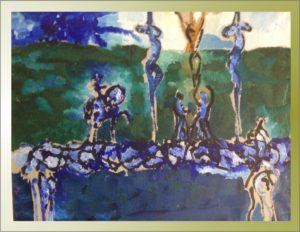 The Crucifixion
The Crucifixion“And when the centurion, who stood facing him, saw that in this way he breathed his last, he said,
Truly this man was the Son of God!” (Mark 15:39 ESV)
By Stephen W. Hiemstra
Second TrialPontius Pilate gets right to the point: “Are you the King of the Jews?” Jesus answers with two words–σὺ λέγεις—which means: you say (Mark 15:2). The chief priests accuse him of many things. Pilate asks Jesus a second question: “Have you no answer to make?” (Mark 15:4) Jesus does not respond (Isaiah 53:7). Pilate is amazed.
First TrialThe night before, the high priest asked Jesus if he is the Messiah (Christ). Jesus responded using the words God from Exodus 3:14 saying: “I am”. Then, in case anyone misunderstood him, he paraphrased the messianic prophecy in Daniel 7:13: “you will see the Son of Man seated at the right hand of Power, and coming with the clouds of heaven” (Mark 14:62 ESV). The high priest accordingly accused Jesus of blasphemy which is punishable by stoning under Jewish law (Leviticus 24:16). But since Rome reserved the right to decide all cases of capital punishment, the chief priests accused Jesus of the political crime of sedition—treason against Rome. This is why Pilate asked Jesus: “Are you the King of the Jews?” (Mark 15:2)
What Kind of Messiah?Realizing that Jesus is innocent of the charge of sedition, like a good politician Pilate begins working the crowd. In offering to release a prisoner named Barabbas, who was guilty of both sedition and murder (Mark 15:7), Pilate is effectively asking the crowd what kind of Messiah they prefer. The crowd asked for Barabbas who was known to be a Jewish nationalist—in other words, the crowd prefers a kingly Messiah.
Messiah means anointed one in Hebrew which translates as Christ in Greek. Three types of roles are anointed: prophets, priests, and kings. In his earthly ministry, Jesus embodied the first two roles (prophet and priest), but the crowd wanted a king—someone to drive the Romans out—as we saw earlier in Mark 11:10.
So Pilate gave them what they wanted (Romans 1:24-25), washed his hands of the decision, and sent Jesus to the cross.
Mark 15: Good FridayAlso see:A Roadmap of Simple FaithChristian Spirituality Looking Back A Place for Authoritative Prayer Other ways to engage online:Author site: http://www.StephenWHiemstra.net, Publisher site: http://www.T2Pneuma.com. Newsletter: http://bit.ly/HailMary21The post Mark 15: Good Friday appeared first on T2Pneuma.net.
April 1, 2021
Mark 14: Maundy Thursday
 Foot washing
Foot washing“Three times a year all your males shall appear before the LORD your God at the place that he will choose: at the Feast of Unleavened Bread (הַמַּצּ֛וֹת), at the Feast of Weeks (הַשָּׁבֻע֖וֹת), and at the Feast of Booths (הַסֻּכּ֑וֹת; Deuteronomy 16:16 ESV).
By Stephen W. Hiemstra
Holy Week as we know it is often celebrated at the same time as the Jewish Feast of Unleavened Bread (Festival of Matzos) often called Passover. Dates differ because of differences in the calendar rules. In Jesus’ time, Passover was one of three festivals that required the faithful to travel to Jerusalem. The other festival familiar to Christians is the Feast of Weeks commonly known as Pentecost. The Feast of Booths is a harvest festival in the fall.
Passover BackstoryPassover commemorates the release of the Jewish people from slavery in Egypt. God instructed Moses to tell the Israelite to sacrifice a lamb and place the blood of the lamb over their door-posts so that the angel of death would pass them by. On the night of the Passover, the angel of death struck down the first born of Egypt and passed over the Israelite households. Pharaoh reacted immediately by expelling the Israelite slaves. They left so quickly that there was not time to bake bread for the journey. Instead, they prepared bread without letting the dough rise—unleavened bread (Exodus 12). Mark 14:12-26 describes how Jesus and his disciples celebrated the Passover meal in Jerusalem now remembered as the Last Super.
Covered by the BloodThe Last Super is important to Christians because it introduces the new covenant in Christ. The word, covenant, found in v. 24 appears nowhere else in Mark’s Gospel and alludes to the covenant meal that Moses and the Elders of Israel shared with God on Mount Sinai (Exodus 24:9-11). The grim symbolism of the wine as the blood of Christ is an allusion to the blood of the Passover lamb (Exodus 12:7) which alerted the angel of death to pass over households displaying the blood. In this sense, as Christians we are (like the door posts) covered by the blood of Christ. By Jesus’ blood our sins are forgiven and we are passed over (Hebrews 9:11-28).
Where Does Maundy Thursday Come From?Where does the name, Maundy Thursday, come from? One theory is that it is Middle English for the Latin word, Mandatum, which means command. According to some traditions, Maundy Thursday focuses on Jesus’ lesson on servant leadership: “If I then, your Lord and Teacher, have washed your feet, you also ought to wash one another’s feet” (John 13:14 ESV).
Mark 14: Maundy ThursdayAlso see:A Roadmap of Simple FaithChristian Spirituality Looking Back A Place for Authoritative Prayer Other ways to engage online:Author site: http://www.StephenWHiemstra.net, Publisher site: http://www.T2Pneuma.com. Newsletter: http://bit.ly/HailMary21The post Mark 14: Maundy Thursday appeared first on T2Pneuma.net.
March 30, 2021
McManus: Risktakers for Christ
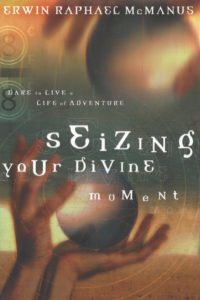 Erwin Raphael McManus. 2002. Seizing Your Divine Moment. Nashville: Thomas Nelson Publishers.
Erwin Raphael McManus. 2002. Seizing Your Divine Moment. Nashville: Thomas Nelson Publishers.
Review by Stephen W. Hiemstra
If you are the kind of person who encourages your child to take a swan dive off the roof of your house and into your arms, then you really need to read Erwin Raphael McManus. If not, perhaps you should think about it.
IntroductionMcManus writes: The divine potential of a moment is unlocked by the choices we make (18). The Greeks call this kairos time—a moment of crisis or decision. Kairos time contrasts with chronos time—calendar or clock time which just plods along. When God created Adam and Eve, he placed them in a “garden of choices.” They choose badly and everything changed (19). Later, God set choices before the nation of Israel. Moses wrote:
See, I have set before you today life and good, death and evil. If you obey the commandments of the LORD your God that I command you today, by loving the LORD your God, by walking in his ways, and by keeping his commandments and his statutes and his rules, then you shall live and multiply, and the LORD your God will bless you in the land that you are entering to take possession of it. But if your heart turns away, and you will not hear, but are drawn away to worship other gods and serve them, I declare to you today, that you shall surely perish. (Deuteronomy 30:15-18 ESV)
Likewise, God asks us to make choices (21). Even the life of Rahab, the prostitute, was redeemed by her choices both a physical and spiritual sense . In joining the Nation of Israel, Rahab became the great, great grandmother of King David which also means that Jesus himself was her descendant (23-24).
McManus warns Christians against getting trapped in passivity. He writes:
We have put so much emphasis on avoiding evil that we have become virtually blind to the endless opportunities for doing good…the great tragedy is not the sins we commit, but the life that we fail to live…There is a subtle danger of hiding apathy behind piety..If there is one secret to seizing your divine moment, it is that you must take initiative (34-35).
McManus focuses his message on 1 Samuel 14:1-23 which is the story of Jonathan, King Saul’s son and friend of David. This is a saga of competing discernment stories. King Saul slept under a pomegranate tree with 600 men waiting for a word from God; Jonathan took his armor bearer and went out to challenge the Philistines to a fight asking God to bless his efforts. God not only blessed his efforts (the 2 of them killed 20 Philistines; v 14), God also set off a panic among the Philistine army that resulted in them suffering a huge defeat—the Philistines were so confused that they ended up killing each other (v 20). Apparently, God is not the god of sleepy Christians.
McManus writes: I have seen the pomegranate dilemma again and again. Those who hold the authority and resources of the kingdom are all too often more motivated to make sure that they do not lose them rather than to make sure they are used properly (38). He concludes: The more you move with God-given urgency, the more God seems to bless your life. The more God blesses your life, the more you have to lose… The more you have to risk, the higher the price of following God (39). Still, McManus observes: when you are passionate about God, you can trust your passions (47).
OrganizationMcManus is lead pastor and cultural architect of Mosaic in Los Angeles, California . Erwin comes originally from El Salvador and holds degrees from the University of North Carolina, Southwestern Theological Seminary, and Southeastern University. Seizing Your Divine Moment is written in 9 chapters which divide, like an earthquake, into sections entitled foreshock, epicenter, and aftershock. The chapter titles are:
Choices—Choose to Live;Initiative—Just Do Something;Uncertainty—Know You Don’t Know;Influence—Breathe In, Breathe Out;Risk—Live Before You Die, and Vice Versa;Advance—Unless You Get a No;Impact—Leave a Mark;Movement—Ignite a Reaction; andAwakening—Wake the Dead (v).These chapters are preceded by acknowledgments and followed by a write up about McManus.
AssessmentSeizing Your Divine Moment played an important role in my pastoral formation. In 2005 when I read the book, I was working full-time as an economist and did not enter seminary until 2008. It helped shape my view of what church can and should be and kept me from despairing about how it often turns out. I recommend the book to those considering seminary or simply desiring to jump start their faith. It is a book for the young and the young at heart.
FootnotesParaphrase of a story from a sermon. See: Erwin Raphael McManus 2005. The Barbarian Way: Unleash the Untamed Faith. Nashville: Thomas Nelson Publishers.
Her testimony is striking: I know that the LORD has given you the land, and that the fear of you has fallen upon us, and that all the inhabitants of the land melt away before you. For we have heard how the LORD dried up the water of the Red Sea before you when you came out of Egypt, and what you did to the two kings of the Amorites who were beyond the Jordan, to Sihon and Og, whom you devoted to destruction. And as soon as we heard it, our hearts melted, and there was no spirit left in any man because of you, for the LORD your God, he is God in the heavens above and on the earth beneath. Now then, please swear to me by the LORD that, as I have dealt kindly with you, you also will deal kindly with my father’s house, and give me a sure sign that you will save alive my father and mother, my brothers and sisters, and all who belong to them, and deliver our lives from death. (Joshua 2:9-13 ESV)
McManus: Risktakers for ChristAlso See:Nouwen: Make Space for Self, Others, and God Books, Films, and MinistryOther ways to engage online:Author site: http://www.StephenWHiemstra.netPublisher site: http://www.T2Pneuma.com Newsletter: http://bit.ly/HailMary21
The post McManus: Risktakers for Christ appeared first on T2Pneuma.net.


